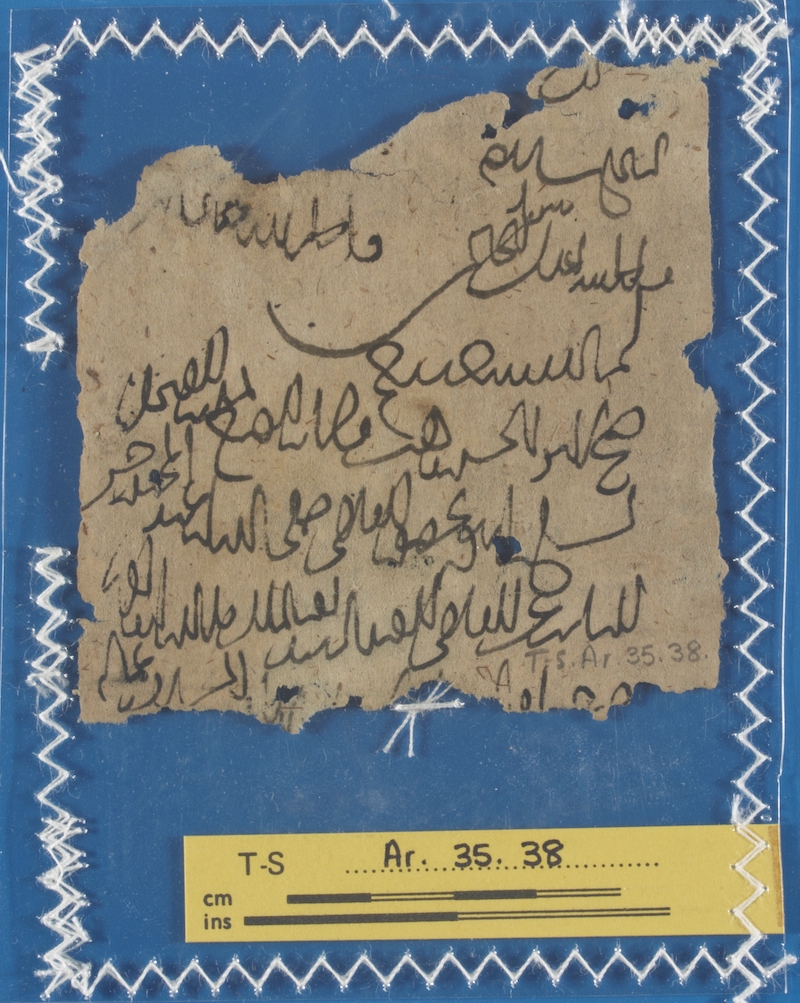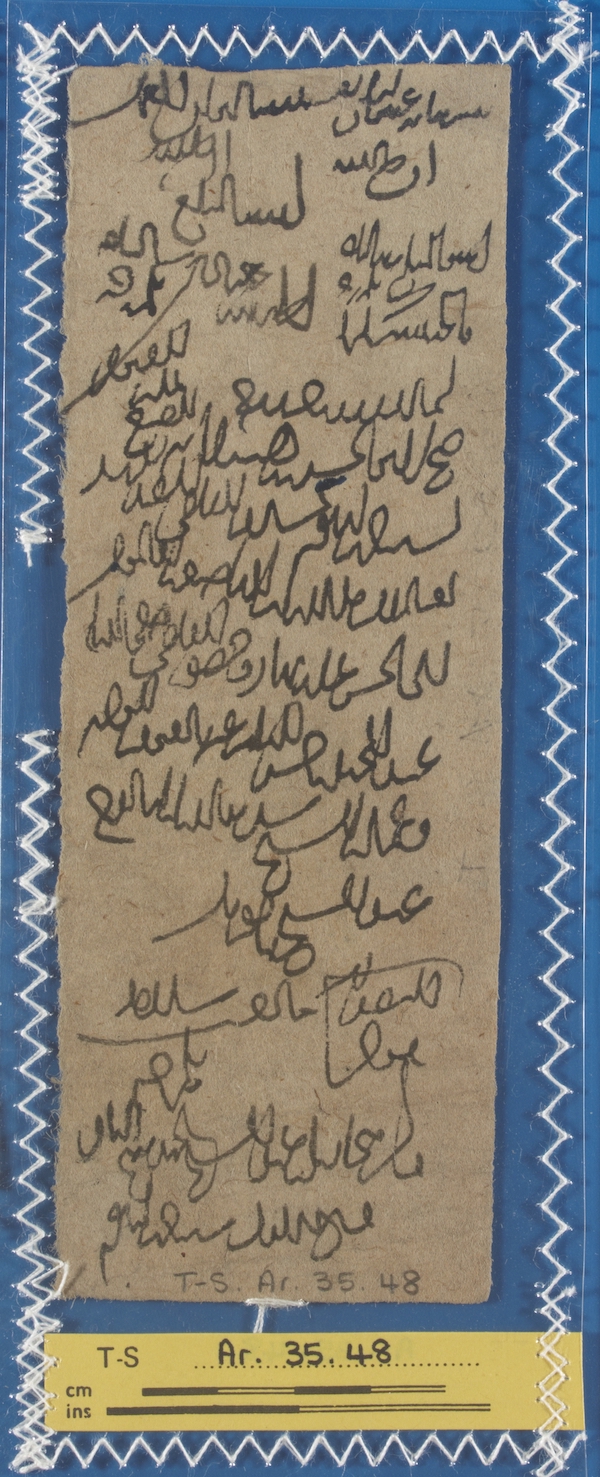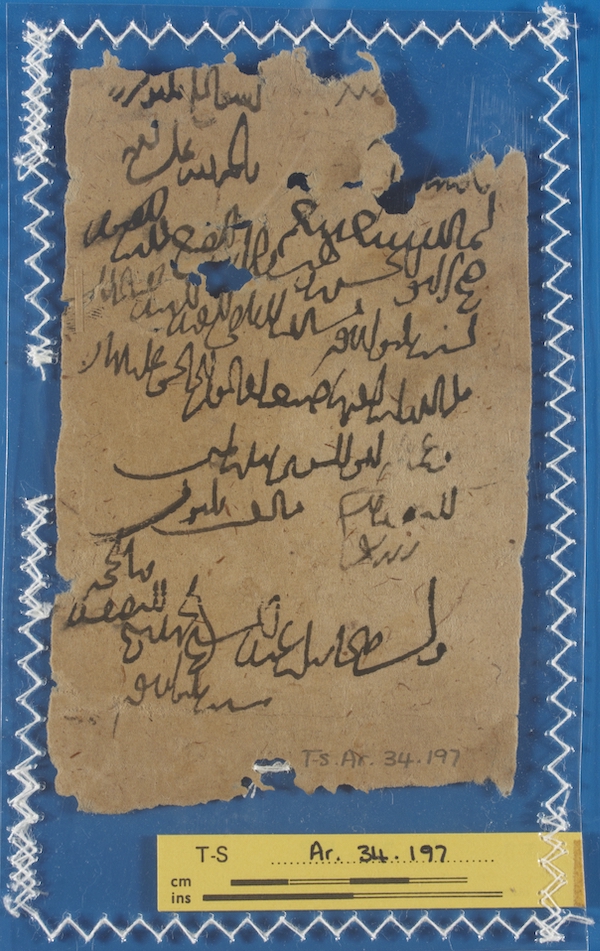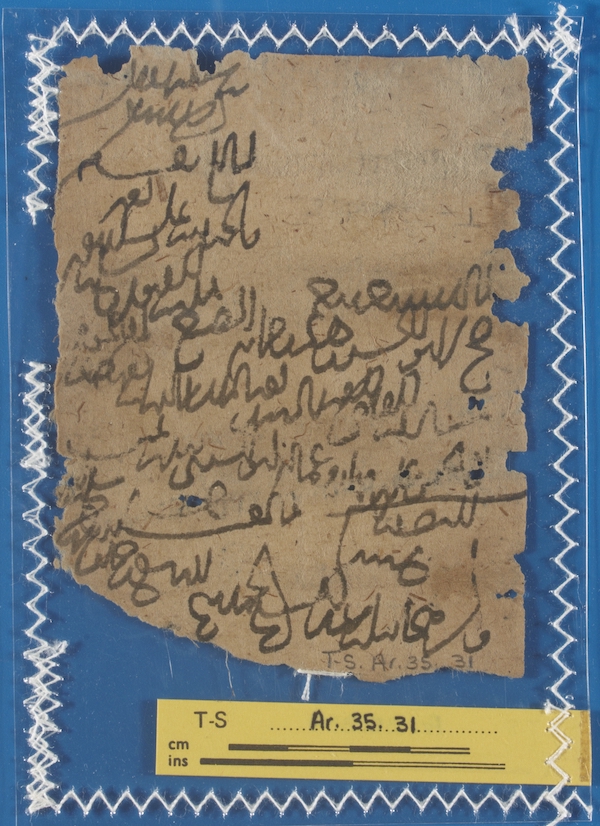Reuniting a Tax-farmer’s Archive
In this world nothing can be said to be certain except death and taxes.
—Benjamin Franklin
Tax receipts might sound like an extraordinarily boring genre of Geniza document. But if there is one thing the world has learned about the Geniza from Hoffman and Cole’s Sacred Trash, it is that one scholar’s trash is another’s treasure.
Tax receipts were the backbone of medieval Islamic polities. As any medieval caliph, sultan or vizier could have told you—along with Ibn Khaldūn—without tax revenue, there can be no sovereign power.
Too bad, then, that tax receipts from the Geniza are among the most forbidding of documents to decipher. It is not merely that the Arabic is unpointed. Scribes simply skipped entire characters or reduced whole words to a single stroke, lifting their pens only rarely. After all, the fiscal clerks knew what they were writing; why should anyone else? Illegibility was a form of authentication.
Such were the challenges the young Geoffrey Khan faced when he edited a dossier of twenty tax receipts dating to 402–405/1012–15 (Khan 1993, nos. 140–159).
All twenty receipts had been issued to a tax-farmer in the Fayyūm named Abū l-Ḥasan b. Wahb, possibly a Jew, to judge by his names (Ḥasan translates to Yefet, Wahb to Natan). Nineteen of the receipts were written in the nigh indecipherable hand of a Christian jahbadh named Mikhāʾīl b. ʿAbd al-Masīḥ. Khan once told me that he had found the receipts difficult to decipher until a chink appeared in the armor. One day in 405/1014, Mikhāʾīl b. ʿAbd al-Masīḥ sent his son to work in his stead. Had he fallen ill? Departed on a journey? Either way, once Khan found a receipt in the hand of his son, Yūḥannā b. Mikhāʾīl, it unlocked the puzzle—thus proving the papyrologists’ dictum that it is easier to read twenty documents than to read one.
T-S Ar. 40.13 and T-S Ar. 39.36: Father (top) and son (bottom)
Several months ago, more receipts surfaced from the same archive, none of them housed in Cambridge.
The first came from a postdoctoral researcher at Princeton, Naïm Vanthieghem, who identified it in the Kaufmann collection in Budapest as he helped me trawl the Geniza for Arabic-script material for the project Documents and Institutions in the Medieval Middle East. Last year at the University of Brussels, Vanthieghem defended his doctoral dissertation on the subject of administrative papyri—in Greek. He is one of the few papyrologists in the world equally capable of deciphering material in Greek, Coptic and Arabic.
At one of our weekly project meetings in October 2015, Vanthieghem taught the rest of our team how to decipher this terrible text and its twenty nasty sisters. He broke the receipts down into their five component parts, each the result of one step in the Kafkaesque process by which Abū l-Ḥasan b. Wahb the tax farmer rendered revenue to the central government in Cairo.
We still have more questions than answers about the process. Did tax farmers travel from their domains to Cairo to deliver their payments, or were their cashiers (jahābidha) in the provinces? As another member of the team, Tamer el-Leithy, objected, why are the receipts all for such minuscule amounts, ½ dinar and less? And given that they are, why do they fail to specify the source of payment—why not just write one big receipt for a larger amount? The dates on the receipts can be as little as 5 days apart. One scenario we imagined was our peripatetic Coptic jahbadh going from village to village together with the tax-farmer collecting the tax from each village for an entire year.
Once the jahbadh scrawled out the receipt (middle of the document, under the basmala), it was sent (but by whom?) to the Office of the Fisc (Dīwān al-ʿAmal) with a request for registration (top left); a clerk in the Dīwān al-ʿAmal registered the payment in a ledger and also noted its registration on the receipt (middle left). From there, it passed to the Office of Fiscal Supervision (Dīwān al-Ishrāf) with a request for registration (top right); the registration was likewise noted on the receipt (middle right). Presumably the authenticated receipt then returned to the tax farmer, Abū l-Ḥasan b. Wahb. Lather, rinse, repeat, for each installment of the fiscal year; sooner or later, Abū l-Ḥasan b. Wahb had a pile of receipts that he eventually deposited in the Geniza.
Vanthieghem’s identification of a twentieth receipt from the archive of the very tax-farmer whose work Khan had so masterfully illuminated was itself worthy of a Fragment of the Month, at least in my no doubt compromised opinion. Boring documents excite me. But like the receipt’s tortuous journey through the Fatimid bureaucracy, the story didn’t end there.
The day after the project meeting in October 2015 in which Vanthieghem taught us to decipher the receipts, I found an email in my inbox from a paper conservator from the Jewish Theological Seminary Library, Amy Gerbracht. Amy had heard an interview in Tablet magazine in which I talked about Arabic-script documents from the Geniza, and wrote to ask whether I might be interested in a box of fragments she had just conserved, including a link to a Dropbox folder.
For months I had been hearing rumors of “raw,” unprocessed Geniza material at JTS. It turned out the rumors were true. (Nearly all have now been conserved, photographed and encapsulated as ENA NS 83ff.; many are already on the Friedberg Genizah Project website).
Like a drug fiend, I immediately opened the Dropbox folder to sample the contents. One document caught my eye: it was nearly identical to the tax receipt Vanthieghem had helped us decipher a day earlier—a document that, two days earlier, I could neither have recognized nor identified, let alone read. So now I had a twenty-second tax receipt, and was about as unconcerned about its damaged state as I have ever been about a Geniza fragment, because the missing bottom half of the page could be completely reconstructed based on parallels.
I was so excited to have stumbled upon tax receipt #22 that I called Geoffrey Khan and interrupted his sabbatical leave in Tel Aviv to tell him the news. My email and tone of voice led him to suspect that I had discovered the lost Abbasid archives. No, it was a pair of Fatimid tax receipts like the ones he had published two decades earlier; but they had been produced by the very same pair of administrators, and where there are twenty plus two, who is to say there aren’t more?
Geoffrey’s response: in fact there is a twenty-third, brought to his attention a few years ago by Cornelia Römer of the German Archeological Institute in Cairo—from a non-Geniza collection.
In November 2015 four more tax receipts turned up, again featuring the same tax-farmer and jahbadh. First I stumbled across one at JTS (#24: ENA 3935.11). Then Tamer el-Leithy identified another there (#25: ENA 3931.7) and then I found two more in Cambridge (#26: T-S Ar. 35.38 and #27: T-S Ar. 30.40 - the latter the hand of the jahbadh’s son).

T-S Ar. 35.38 & T-S Ar. 30.40: Stop the presses
In December 2015, eight more came to light. I found three in Cambridge (#28: T-S Ar. 35.48; #29: T-S Ar. 34.197; #30: T-S Ar. 35.31). Then Vanthieghem found another four at JTS (#31: ENA 3931.5; #32: ENA 3942.3; #33: ENA 3944.10, #34: ENA Inv. NS 71.7), and el-Leithy found another in Cambridge (#35: T-S Ar. 39.272). It seemed they were everywhere. Ben Outhwaite then threatened to send us a cease and desist order.



T-S Ar. 35.48, T-S Ar. 34.197 & T-S Ar. 35.31: Enough already
Could Abū l-Ḥasan b. Wahb have left some of his tax receipts behind in the Fayyūm, from whence they were excavated and incorporated into papyrus collections?
Please write us if you find anything that resembles the above.
Cite this article
(2016). Reuniting a Tax-farmer’s Archive. [Genizah Research Unit, Fragment of the Month, April 2016]. https://doi.org/10.17863/CAM.7896
If you enjoyed this Fragment of the Month, you can find others here.
Contact us: genizah@lib.cam.ac.uk
The zoomable images are produced using Cloud Zoom, a jQueryimage zoom plugin:
Cloud Zoom, Copyright (c) 2010, R Cecco, www.professorcloud.com
Licensed under the MIT License
